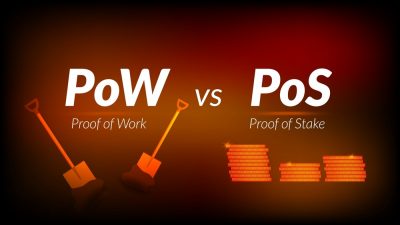Hyperledger is an open-source platform designed with a vision to advance cross-industry blockchain technologies. It is a global collaboration created by The Linux Foundation that includes finance, banking, Internet of Things (IoT), supply chains, manufacturing, and technology. Hyperledger, as a global project, contains hundreds of projects, proof-of-concept, prototypes, and production systems.
Need for hyperledger
The Web, as a broader technology, involves more fundamental revolution than the blockchain technology. Blockchain technology is a peer-to-peer distributed ledger forged by consensus, with a system for “smart contracts” and other assistive technologies. It, thus, contributes to creating a new generation of transactional applications that establish trust, transparency, and accountability at their core by streamlining business processes and legal constraints.
Hyperledger acts as a base of operating systems for marketplaces, micro-currencies, data-sharing networks, and decentralized digital communities. It is capable of reducing the complexity and cost of getting things done in the real world on a large scale. Only an Open Source, collaborative approach to software development, can ensure the longevity, transparency, interoperability, and support needed to advance blockchain technology toward mainstream commercial adoption. Thus, hyperledger is all about-software developer groups that build blockchain platforms and frameworks.
Goals
Hyperledger is neither a cryptocurrency network, nor a blockchain system, or an organization. It not even supports a cryptocurrency like bitcoin. But it does provide the standards and necessary infrastructure required for developing various blockchain-based systems and applications for industrial use. Hyperledger acts as a hub, where various individual blockchain-based projects and tools that adhere to its defined design philosophy operate under its umbrella.
Under its umbrella, Hyperledger holds the following goals:
- To support business transactions, it creates open-source, enterprise-grade, distributed ledger frameworks and code bases
- Providing open, neutral, and community-driven infrastructure that is supported by business and technical governance
- It helps in building technical communities for developing blockchain and shared ledger POCs (proof of concepts), field trials, use cases, and deployments
- Creating awareness in public about the market opportunity for blockchain technology
- Caring promotional activities for the communities taking a toolkit approach with many platforms and frameworks
Benefits of hyperledger from an enterprise point of view
Enterprises are making use of hyperledger blockchain to gain a competitive advantage, boost market share, and reduce risk of operations. They are planning to work on strategic projects that will help them solve particular industry-oriented issues.
Hyperledger is built on the idea that blockchain is the perfect open-source platform as it is capable of solving trust issues. It helps in ensuring a direct approach via decentralization and peer-to-peer transmission. The interoperable nature, extreme security, modular design, high-end API (Application Programming Interface) support, as well as cryptocurrency-agnostic design architecture of the hyperledger, makes it more reasonable for the use across numerous industries.
1. Enhances productivity
Hyperledger makes use of the divisional technique of labor to boost project development. It tries to know everyone’s genre, and based on it, assigns tasks to each labor. These practices will increase the overall productivity of the project and help the individuals to have a stronghold in the type of work they do. Thus, creating more space for expertise and concrete productivity. Implementing such methods also leads to the elimination of competition in the workers as each one of them is involved in working on their individual areas.
2. Managing intellectual property
Hyperledger acts as a greenhouse blockchain by putting together suppliers, developers, and users from around the globe under one single platform. They work on a single goal of learning about blockchain and generating enterprise solutions with it. The greenhouse architecture aims at ensuring consistent care of the intellectual property.
3. Data security concerns
Data partitioning on the blockchain can help to achieve the privacy of data elements. It provides physical detachment from sensitive data. Hyperledger-supported channels allow data dissemination only to parties needing to know about it.
For example, there are situations where financial institutions expressed concern that rivals might see the exact number of transactions performed. It, thus, reduces the possibility of breaks in the cryptography that could allow private information to become public.
4. Rich querying capabilities
Every single update present in the distributed ledger has a set of asset key-value pairs associated with it. Hyperledger fabric’s file system incorporates LeveIDB, which makes it suitable for query functions. It comprises a key-value database. CouchDB is also available, which is a document database that stores content as JSON. Thus, enabling easy querying on the database. The data model in it gets compatible with the current key/value programming model, which leads to simplification in the work of producing reports and audit functions.
For example, the JSON document style may be used in a supply chain scenario to describe data that is unique for goods and transport entities. One may quickly generate asset reports to track the locations of the asset until the asset gets delivered to its final destination.
5. Performance, scalability, and levels of trust
Hyperledger is built on the idea of a modular architecture that divides transaction processing into three phases: transaction validation and commitment, distributed knowledge processing and agreement, and transaction ordering. Such type of process decreases the need for verification and enhances trust, thus optimizing network scalability and performance.
Traversing of the network is done only through the signature read-write sets. It helps to preserve privacy, as transactions can be accessed only by the endorsers and peers who conduct the transactions.
Last words
Currently, several numbers of businesses are working with hyperledger enterprise blockchain. Hyperledger strives to provide a trustworthy, secure, and private environment for enterprises as they deal with vast amounts of data. It focuses on promoting partnerships through interoperable frameworks. This will help to root a new way for the blockchain system to reach the peak of its glory.
With the active participation of ten working groups, multiple projects, and with an estimation of 110 meetups worldwide that may include several numbers of participants, the hyperledger has a long way to go in the future.
For more such insightful content on different technologies access our latest whitepapers on blockchain here.






































































